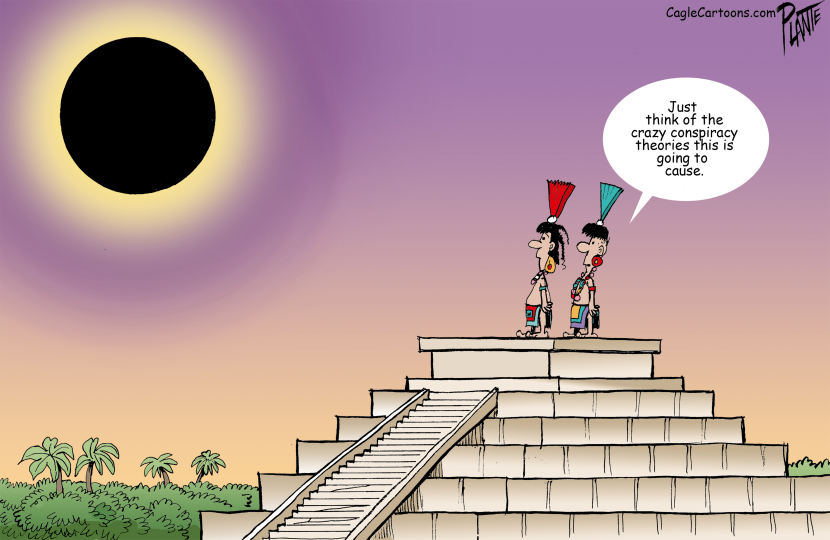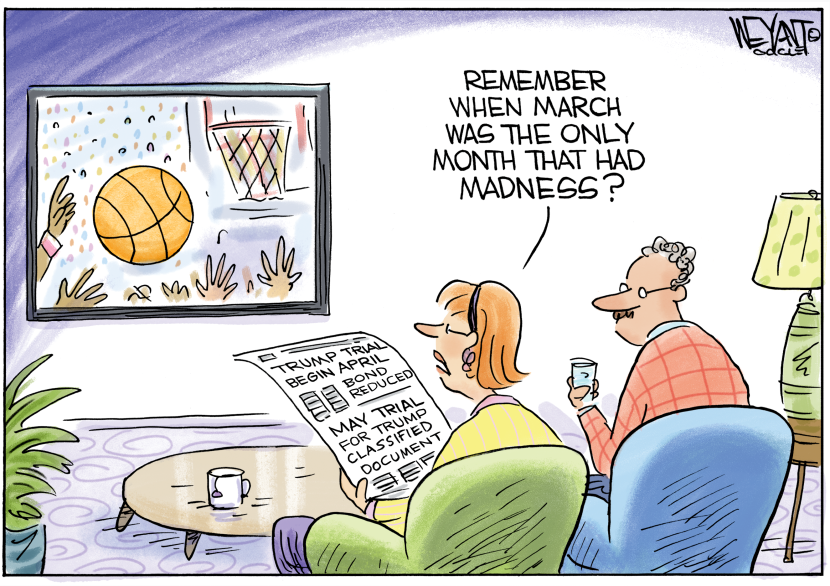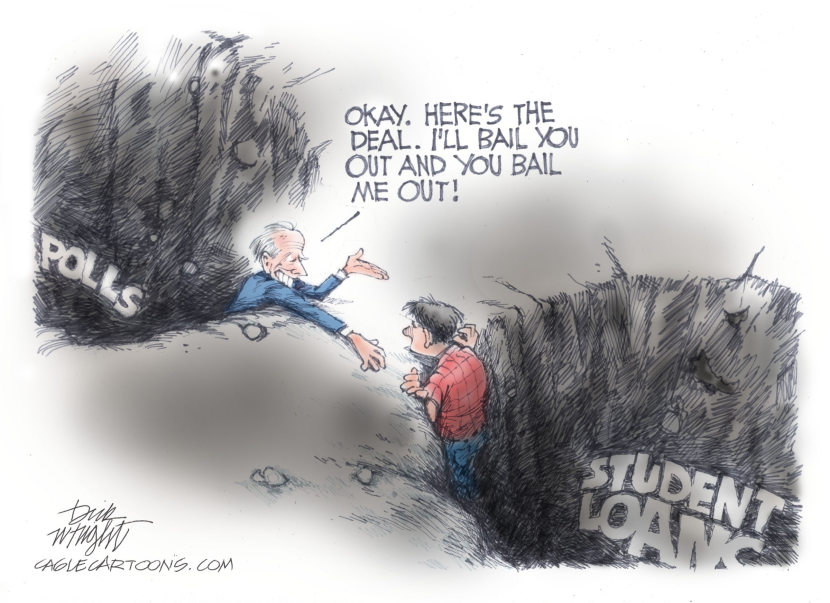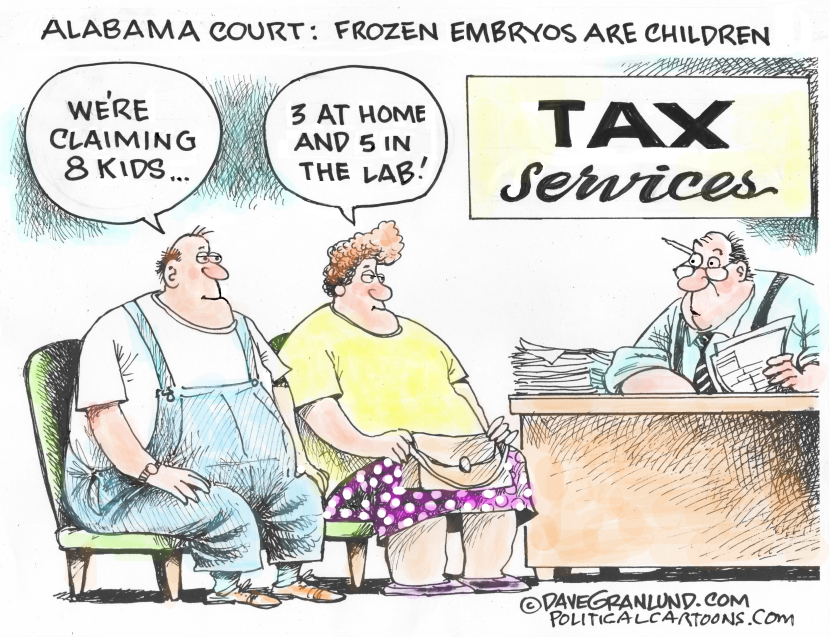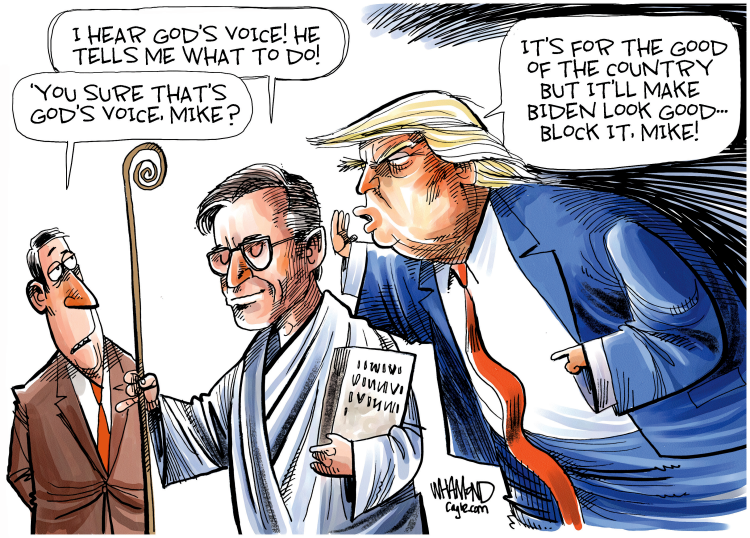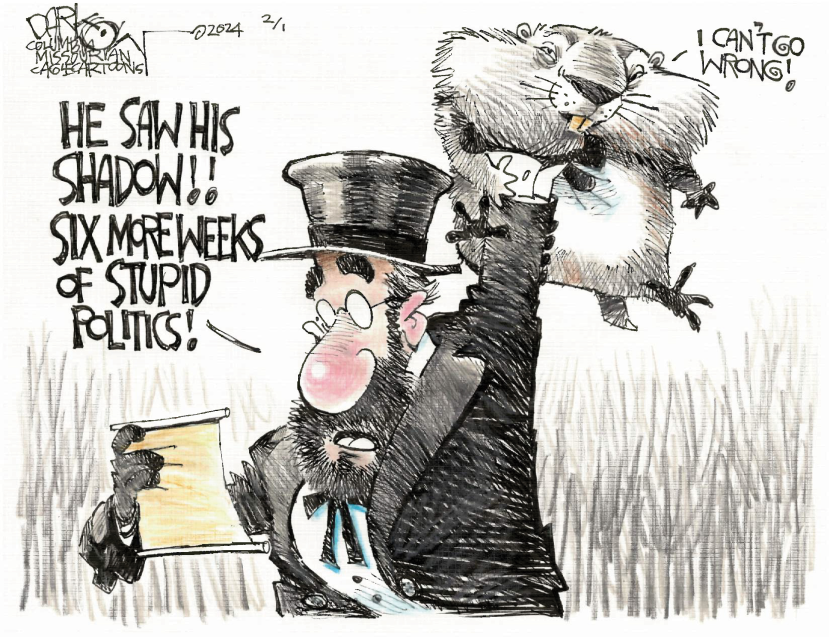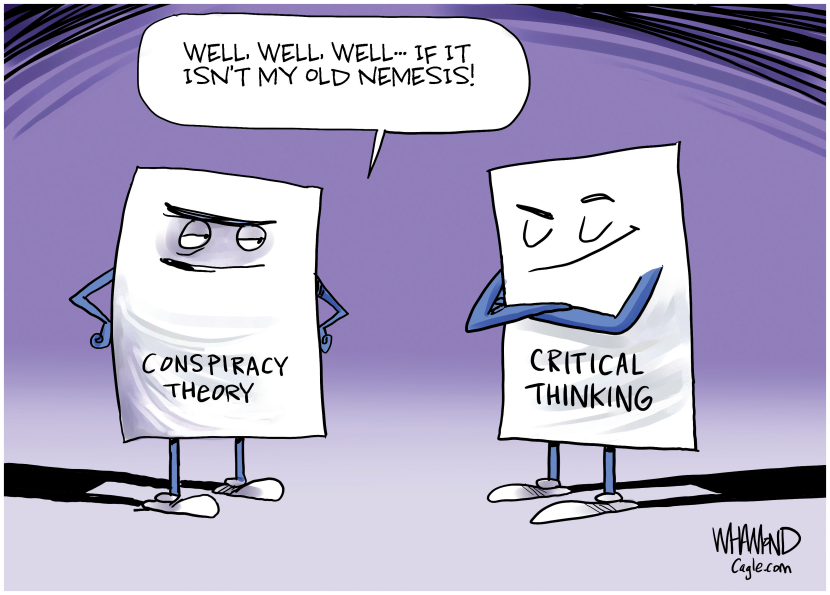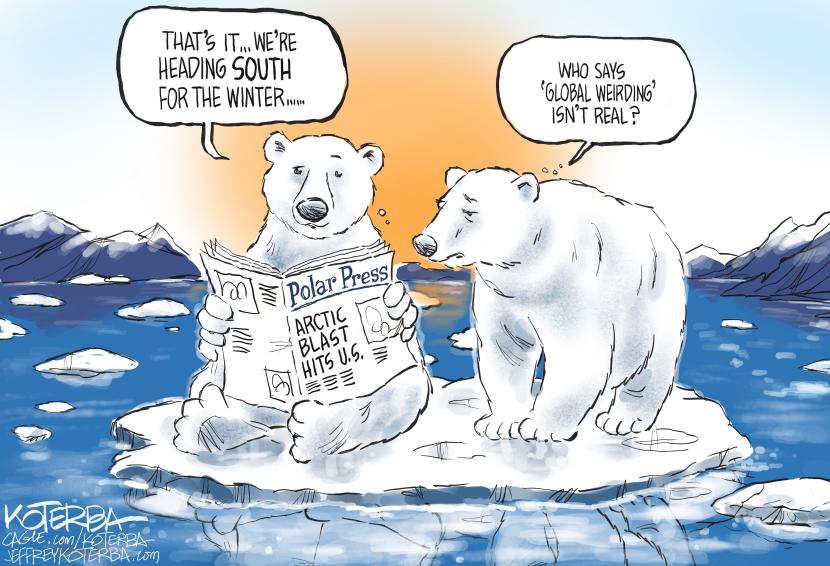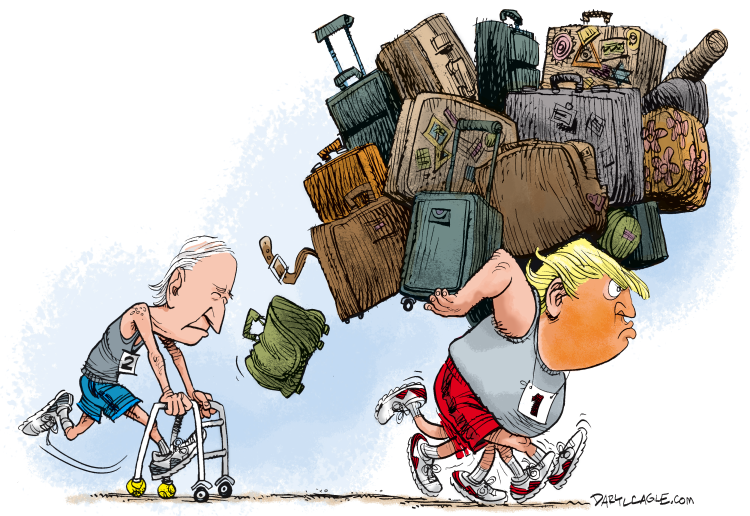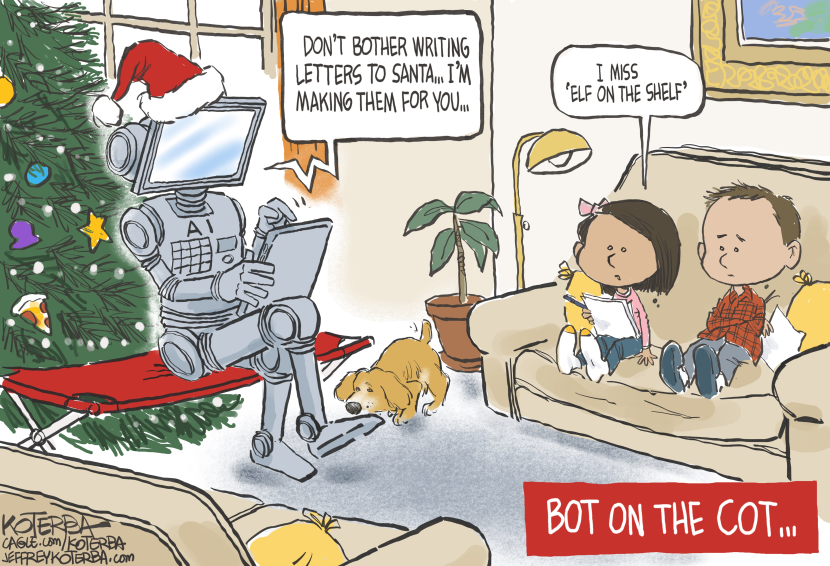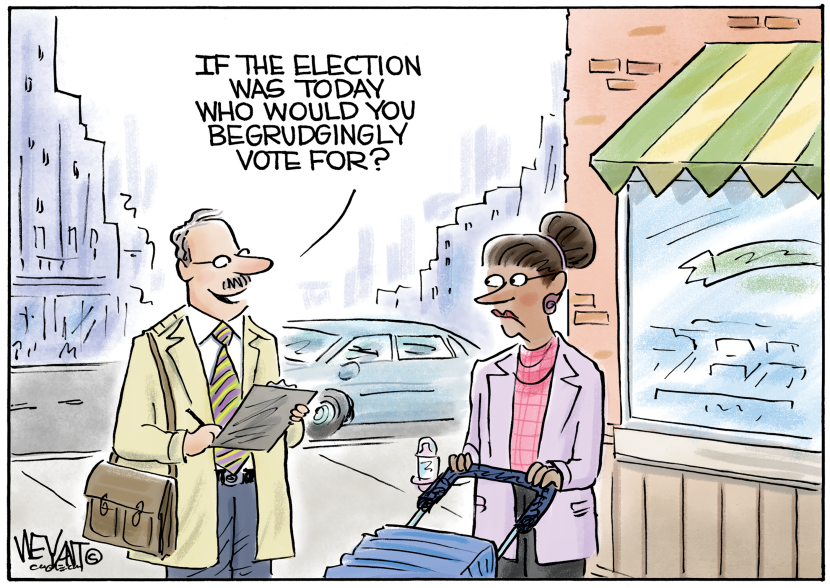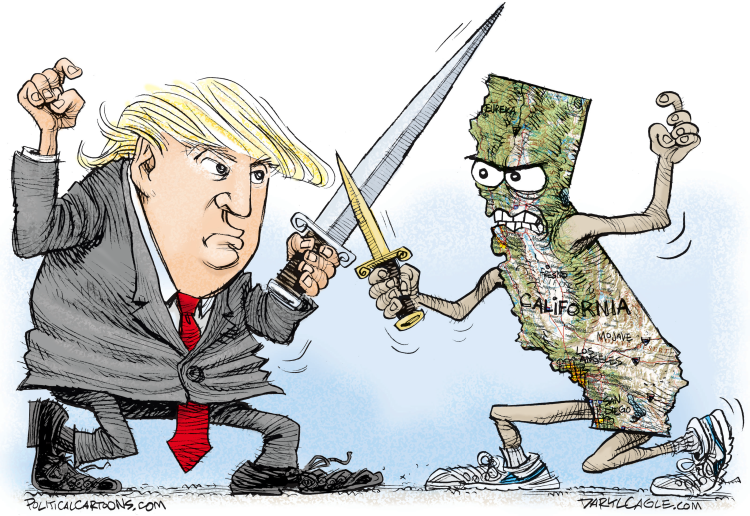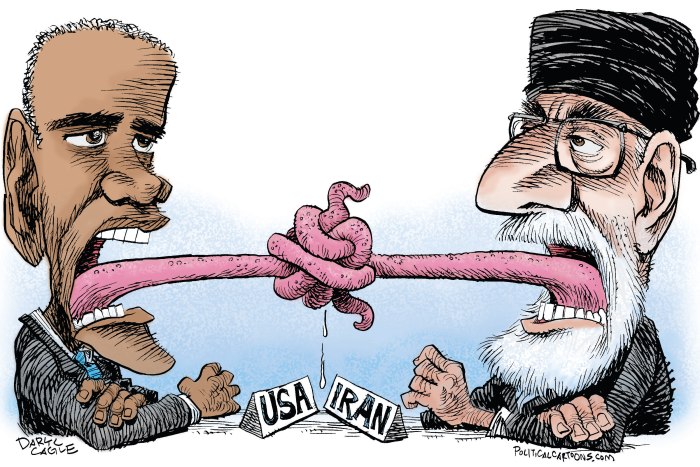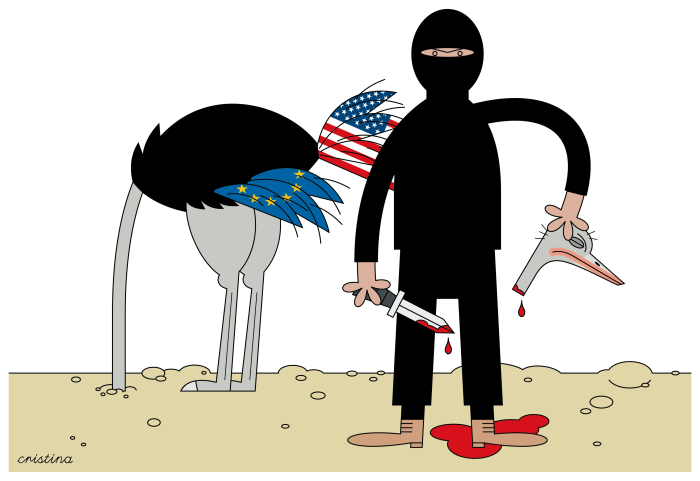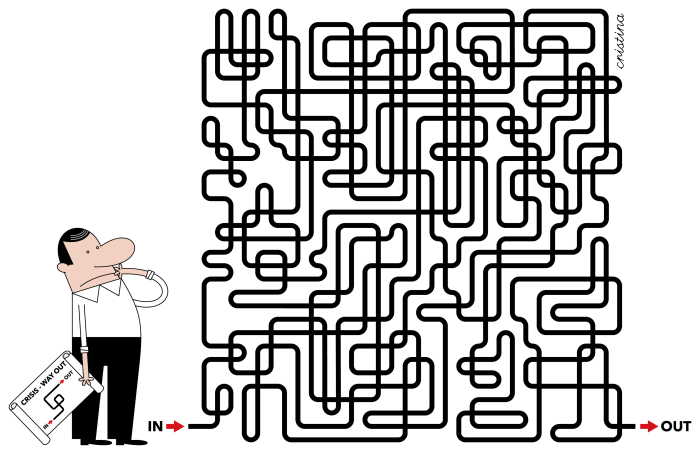Here’s a nice article by Dianne Hardisty, a former editor at the Bakersfield Californian newspaper, an excellent subscriber to our Cagle Cartoons newspaper package. She interviewed me and three of our cartoonists, Adam Zyglis, Rick McKee and Nate Beeler.

Editorial cartoons: Great antidotes for bloated egos
By Dianne Hardisty
You can almost hear the screams of editorial page editors: “Find me a pro-Trump cartoonist!”
Good luck finding a “pro-Trump” cartoonist of any political stripe, including conservative, these days.
“A real editorial cartoonist is not pro-anything,” explains Rick McKee, a staff cartoonist with The Augusta (Ga.) Chronicle. His work is distributed to hundreds of newspapers around the country by the Cagle Cartoons syndicate.
“Editorial cartooning is a negative art. You may be more supportive of a certain point of view. But it’s criticism. You don’t want to be a cheerleader for any particular politician,” says McKee, who takes a conservative approach to most political issues.
Since Donald Trump was sworn in as president in January, editorial cartooning has kicked into high gear. And the new president’s combative nature, compulsive tweeting, political stumbles and thin skin have been the gifts that keep on giving to the nation’s cartoonists.

“It’s like drinking from a fire hose. It’s overwhelming,” says Nate Beeler, a conservative staff cartoonist with The Columbus (Ohio) Dispatch, whose work also is distributed by Cagle Cartoons.
“You can’t keep up,” says Adam Zyglis, who draws five cartoons a week for The Buffalo (NY) News and is the president of the Association of American Editorial Cartoonists. “You have to prioritize. You could easily do two, three, maybe more cartoons a day.”
And on the receiving end of this avalanche of cartoons are the nation’s opinion editors, who often struggle to give political “balance” to the commentary they present to their readers.
In emails and calls to their colleagues, editors have been searching for conservative – yes, especially pro-Trump – columnists and cartoonists. Some also are looking for columnists to explain how the largely ignored people who live in the fly-over states were able to surprise all those “brilliant” political pundits by electing Trump.
Editors are looking for the Holy Grail of “balance” for their pages. And the job is made tougher in this Trump era by 2016 voters handing control of Congress, as well as the White House, to the Republican Party.
“Power corrupts, no matter who is in power,” says the conservative Beeler, explaining that it is his job “to take on people in power.” And with few exceptions, those people will be the Republican politicians, who now have absolute power.
This imbalance has happened before, when absolute political power has shifted to one political party or another after an election. But it seldom lasts. Usually within an election cycle or two, fickle voters return to divided government, splitting up power between parties in Congress and the White House.

But in the meantime, the life of an opinion editor can be pure hell, with readers screaming about what they perceive is bias in the newspaper’s sometimes lopsided criticism of those in power.
Good luck achieving some ideal concept of balance in an opinion section, when there is little balance of power in the halls of government. And with the election of Trump, there is also no shortage of criticism.
The president’s critics are not confined just to the Democrats, snotty cartoonists and the “dishonest media.” They include many people in his own political party.
With Trump showing no signs of mellowing and a small group of advisors in the White House egging him on, the fire-hose-flow of controversies shows no sign of abating, and neither does the flow of cartoons that criticize and ridicule the president.
During last summer’s presidential campaign, Daryl Cagle, a cartoonist, who worked for more than a decade drawing The Muppets, and was later on the staff of The Honolulu Advertiser and MSNBC before creating his Cagle Cartoons syndicate, wrote prophetically about how a Donald Trump or Hillary Clinton administration would look in cartoons.
“Cartooning is a negative art and a supportive cartoon is a lousy cartoon. Hillary is a rich character that we have known for decades. There is a grand history with Hillary and Bill Clinton that gives us many more clichés for a broader cartoon palette.

“If Trump loses in November, we should enjoy four years of great Hillary cartoons. If Trump wins in November, the Trump-monster cartoon-apocalypse will continue. God save us.”
And, indeed, it has continued. In fact, Trump seems to be invigorating cartoonists.
“We have a newfound mission,” Zyglis says. “What we do is important. It always has been. But there is more immediacy today. This is a time we are needed the most.”
“Editorial cartooning becomes more important as democratic institutions are threatened,” Zyglis says, noting the insults Trump throws at just about every institution that stands in his ways, including the courts, intelligence agencies and news media.
“It is clear how much he despises the media. And in authoritarian regimes, satire is the first target. Look how ‘Saturday Night Live’ gets under Trump’s skin. An editorial cartoon is just a single panel form of a ‘Saturday Night Live’ skit.”
But Beeler is confident his colleagues will stand strong and prevail against Trump’s attacks because “editorial cartoons are great antidotes to bloated egos.”
Dianne Hardisty is a former editorial page editor, who now writes about the media and politics.
